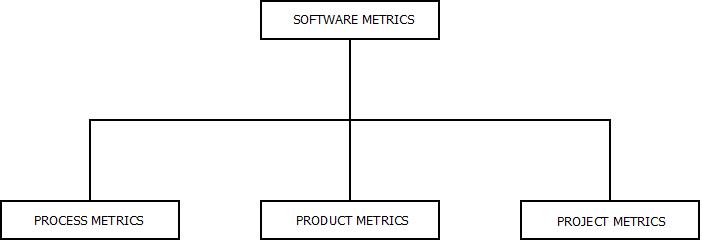Software Reliability : Introduction
- Software Reliability can be defined as the ability of a software product to perform consistently and be trustworthy to its users i.e. The software product must perform as required and should not deviate from its goal.
- Reliability means trustworthy or consistent.
- Reliability of a software product is an important aspect as it shows the actual ability of the software product.
Software Reliability : Software Metrics
- Software metrics are the standards of measurement for a software product for certain properties and functionalities. Software metrics can be broadly classified into three categories. These are listed below :

Software Metrics : Software Reliability
- Process Metrics
- The Process Metric are used for the improvement of the development and maintenance of a software product. It mainly measures the efficiency of the software product.
- Product Metrics
- The Product Metric are used for demonstrating the software product characteristics and features such as the performance and its quality.
- Project Metrics
- The Project Metrics are used for demonstrating the characteristics of whole software project which includes the total time, total cost, productivity and teams.
Software Reliability : Defect Rate
- Defect Rate can be defined as the number of defect detected per unit the number of test cycles.
Defect Rate = (No of Defects Detected* 100) / (No of Test Cycles)
Software Reliability : Defect Density
- Defect density is defined as the number of defects arrived during a specific period of time per unit the size of software/module.
Defect Density = (Defect Count) / (Size of module or software)
- The defect density is counted per thousand lines of code and is called as KLOC.
- The standard for defect density is not fixed. But, one defect per thousand lines of code is considered as good quality of the project.
Software Reliability : Defect Prevention
- Defect Prevention is a plan made out to reduce the number of defects in a software product by identifying the cause of defect and preventing them to cause other problems in the software.
- The strategy of defect prevention is to analyse the phases of the software product where the defects were arrived previously and preventing the occurrence of those defects in future.
- Defect Prevention causes an increase in productivity and effort reduction.
Software Reliability : Defect Containment
- It is a strategy, an attempt to increase the software quality and reducing the cost of the software product simultaneously.
- Defect containment is reported usually as a percentage of defects captured in the phase in which they are originated.
- Also, it is a process of displaying the information about the issues and problems occurred and reported for a software system.
Software Reliability : Inspection in Software Quality
- Inspection in software project often leads to verification of quality of that software product.
- With a goal of identifying the defects, Inspection refers to peers review of a software product done by individuals in order to look for defects using certain well defined processes.
- The stages of inspection of software quality includes:
- Planning.
- Overview Meetings.
- Preparation.
- Inspection Meeting.
- Follow Up.
- Rework.